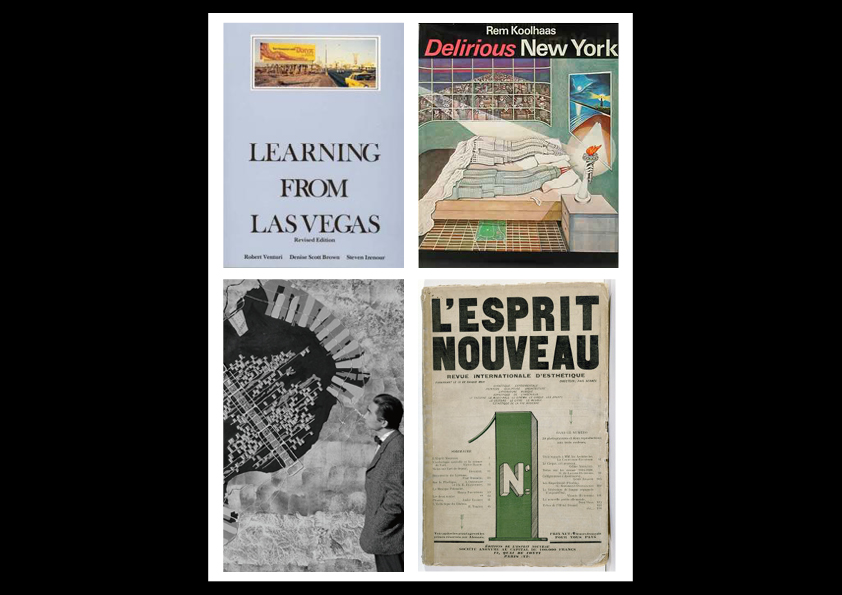
It’s time.
Share
Above image: You can’t escape from words. Image courtesy: Michael Holt
Text: Michael Holt
What’s the use of words? How can we find the time to read, write or discuss? There’s no room for theories, books or magazines in the contemporary profession? Right? It is AR’s perspective that there may be no more an appropriate time to critically discuss architecture than now. To open up discussions to a broader range of practitioners and to enable new and old voices to express their interests, opinions, arguments or positions. To use a well-known phrase (and a particularly prescient one): ‘it’s time’.
This article outlines how AR operates and why. What I would like to explain, here, is why AR chooses to label each issue with a single word and is not tied to type or loosely framed architectural subjects. What we advocate for is the advancement of critical discourse and the insistence on the expert role of the architect; we want to suggest that as practitioners we should discuss built work in terms of ideas and not the extraneous factors that the brief demands. We want the practice of architecture to produce buildings as manifestoes.
Words used previously are oblique in their link to architecture (pawn, present, contrasts, authority, elements, super-, margins), but precisely in their vagueness comes the opportunity for investigation. They are all umbrella terms that facilitate discussions in relation to, and reliant on, the word. The most recent example is ‘margins’ (AR138–Margins), whose features focus on profit margins and Modernism in marginalia to contemporary practice. The term is broad enough to create conversation and focused enough to direct it.
We would like you to suggest a word to be used for our forthcoming issue, AR140. As you’ll know, in each print issue of AR, we outline the ‘Preview’ to the next issue and provide an email address for submissions. Here’s your chance to curate this. Nominate a word (and its argument) as AR140’s umbrella term to be investigated. See below for details.

Archizines at Storefront for Art and Architecture, New York, 2012. Diagram courtesy: Storefront for Art and Architecture
Words are mini-manifestoes
As noted in the ‘In Conversation’ article in AR135–Elements, “the contemporary discipline has witnessed the slow disintegration of the wielding power of manifestoes, the devolution of critical account and the almost inevitable descent into value-engineered projects by default.” To advocate for a position or rationale in producing architecture is relatively dead. Therefore, the word allows for arguments to be formed. It is the question aimed at starting a conversation.
The manifesto vanished as a result of Robert Venturi and Denise Scott Brown’s Learning From Las Vegas (1977) and Rem Koolhaas’ ‘retroactive’ manifesto, Delirious New York (1978). Where previously the manifesto was concerned with augmenting history as evidence in its formulation, these texts reposition the evidence as the crucial component recoiling a manifesto, causing history. The city became a manifesto in its own right as to how one could practice architecture in a singular building somewhere else.

From left to right (clockwise): Learning From Las Vegas; Delirious New York; Metabolism founder, Kenzo Tange and the Tokyo Bay project; and, L’Esprit Nouveau, Volume 1, 1918
There are countless examples of manifestoes: the Metabolists delivered a pseudo-manifesto through 4 projects and used a common denominator in the term ‘metabolism’ – an established order and method of working via the smallest residential designs (Kikutake’s Sky House, 1958) paralleled in Le Corbusier’s Villa Savoye (1929) and the Purist Manifesto (1918). The Groupe d’Études d’Architecture Mobile (GEAM), led by Yona Friedman, advocated for architecture elevated above ground as ‘spatial urbanism’, where a city is based on the input of its inhabitants.
Superstudio’s Antonio Natalini and Andrea Branzi defined a strong political agenda that attempted to reenergise and destabilise architecture. At the same time, Aldo Rossi wrote Architecture of the City (1966), which ran alongside the creation of his early works: the building and the book ran in conjunction. Robert Venturi and Denise Scott Brown, similarly, wrote Complexity and Contradiction in Architecture (1966) while building the Vanna Venturi house: theory and practice running parallel, each dependent on the other.

Downtown Athletics Club section and floor plans in Delirious New York, Rem Koolhaas. Images courtesy: OMA
Rem Koolhaas is arguably the greatest proponent of the building as manifesto. In Delirious New York, the main focus is the Downtown Athletics Club (DAC) – an incredibly dull building on the outside but active on the inside. Form and function are, to use a phrase from Bernard Tschumi, in a ‘non-reciprocal relationship’. It is the extrusion and maximisation of the floor plate that allows for the argument of Koolhaas’s ‘Manhattanism’ to be identified and evidenced against.

Downtown Athletics Club section overlaid as floor plan for Parc de la Villette, Paris. Diagram courtesy: OMA
In the book, the city captures an argument and that can then be materialised or deployed elsewhere. The DAC was eventually projected (as a section rotated 90-degrees to form a floor plan) onto Parc de la Villette, Paris – the first importation of Manhattanism into European fabric.
Young architects, though, get small houses as early commissions, which often don’t allow for an opportunity for manifestoes but why not? Do young practitioners need a space to unpack their arguments, to formulate manifestoes and to propose new ideas? AR is that place. The single word offers an opportunity to critique the profession, the discipline and the methods in which we practice.
Suggest a word, start a conversation
Work alongside our editor, Michael Holt, to formulate AR140. Send all ideas to submissions@arasiapacific.com with 100 words outlining your proposal.

















